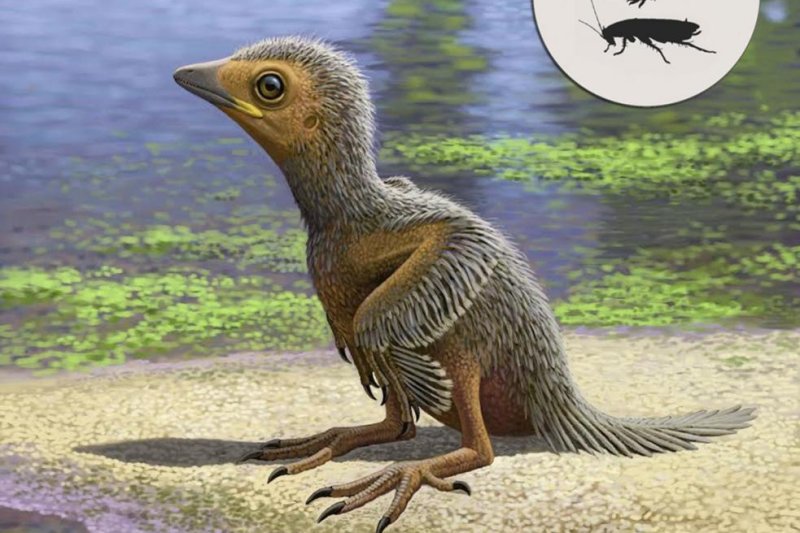1 of 2 | The baby bird was likely not much bigger than a cock roach and weighed just three ounces. Photo by Raul Martin/University of Manchester
March 5 (UPI) -- A newly discovered fossil has offered paleontologists new insights into the development of prehistoric birds.
The fossil is one of the smallest avian fossils ever discovered, offering a snapshot of the bird's skeletal development. The 127-million-year-old baby bird belonged to a group of prehistoric birds known as Enantiornithes.
Like their dinosaur relatives, Enantiornithes disappeared at the end of the Mesozoic Era, some 65 million years ago. Though they have no modern relatives, the group includes the first birds to evolve during the Age of the Dinosaurs.
An improved understanding of Enantiornithes development and evolution can offer insights into the emergence and evolution of modern avian species.
The tiny bird specimen -- no bigger than a human pinky finger and weighing just ten grams -- likely died only days after being born, its bones still ossifying. As a result, scientists were able to glean new insights into the nature of bone development among Enantiornithes birds.
Scientists detailed those insights in a new paper published this week in the journal Nature.
"The evolutionary diversification of birds has resulted in a wide range of hatchling developmental strategies and important differences in their growth rates," Fabien Knoll, researcher at the University of Manchester, said in a news release. "By analyzing bone development we can look at a whole host of evolutionary traits."
Imaging technology called synchrotron radiation allowed scientists to observe the bones' microstructures.
"New technologies are offering palaeontologists unprecedented capacities to investigate provocative fossils," Knoll said. "Here we made the most of state-of-the-art facilities worldwide including three different synchrotrons in France, the U.K. and the United States."
The images showed the bird's breastbone, or sternum, had yet to transform from cartilage into solid bone by the time of its death. The pattern of ossification observed using synchrotron radiation suggests Enantiornithes birds deployed a wide array of development patterns.
"This new discovery, together with others from around the world, allows us to peek into the world of ancient birds that lived during the age of dinosaurs," said Luis Chiappe, researcher at the Los Angeles Museum of Natural History. "It is amazing to realize how many of the features we see among living birds had already been developed more than 100 million years ago."















